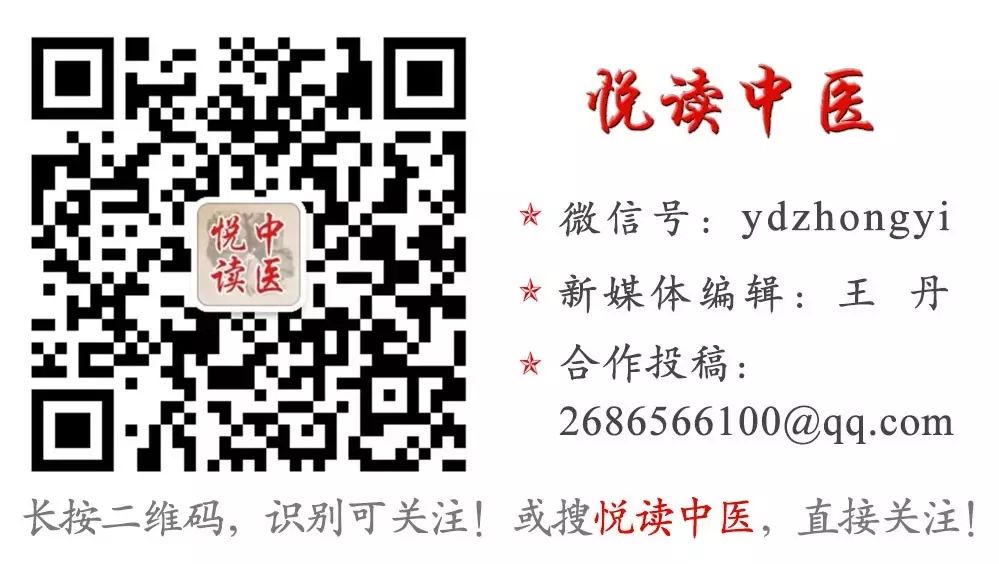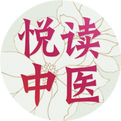
Editor’s Note
The group of people who value health and wellness is growing, and there are many methods for maintaining health, among which many have fallen in love with Gua Sha (scraping therapy). Through Gua Sha, one can not only eliminate pathogenic factors, dispel wind and cold, and enhance immunity, but it is also a very effective health maintenance method. Additionally, Gua Sha is simple and easy to perform, making it popular among many health enthusiasts. However, many people do not understand the techniques of Gua Sha. Today, I will guide you through the techniques of Gua Sha with detailed illustrations!

 1. Classification of Gua Sha Techniques
1. Classification of Gua Sha Techniques
(1) Classification by Force Applied1. Light Scraping Method
When performing Gua Sha, the scraping board lightly contacts the skin with minimal pressure, causing no pain or discomfort to the recipient. After light scraping, the skin only appears slightly red, without bruising. This method is suitable for elderly individuals or patients diagnosed with deficiency patterns.
2. Heavy Scraping Method
In this method, the scraping board applies greater pressure to the skin, within the patient’s tolerance. This method is suitable for the sides of the spine in the lower back, areas with rich soft tissue in the lower limbs, and for younger individuals or patients diagnosed with excess or heat patterns.
(2) Classification by Speed of Movement1. Fast Scraping Method
The frequency of scraping is over 30 times per minute. This method is suitable for individuals with strong constitutions and is primarily used on the back, limbs, and for patients diagnosed with acute or externally contracted diseases.
2. Slow Scraping Method
The frequency of scraping is within 30 times per minute. This method is suitable for individuals with weak constitutions and is primarily used on the head, face, chest, abdomen, and inner thighs, as well as for patients diagnosed with chronic or internal deficiency diseases.
3. Vibrational Scraping Method
This involves using the edge of the scraping board to contact the skin, applying downward pressure while performing rapid rhythmic vibrations at a frequency of over 100 times per minute; or gradually moving the scraping board while vibrating. This method is suitable for conditions involving spasmodic pain, such as flank pain, stomach pain, lower abdominal pain, and calf cramps.
(3) Classification by Direction of Scraping1. Linear Scraping Method
The linear scraping method, also known as the straight board scraping method, involves scraping the skin in a straight line with the scraping board (see Figure 1). This method is suitable for relatively flat areas of the body, such as the back, chest, abdomen, and limbs.
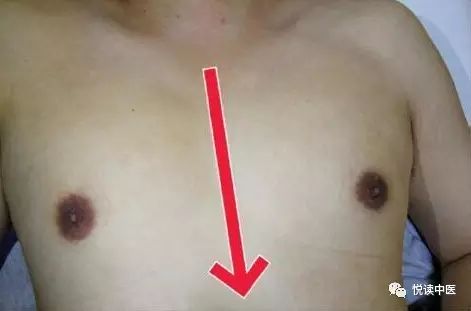
Figure 1 Linear Scraping Method
2. Curved Scraping Method
The scraping direction is curved, resulting in arc-shaped marks on the skin. The scraping direction often follows the muscle pathways or skeletal structures (see Figure 2). This method is suitable for the intercostal spaces of the chest and back, around the shoulder joints, and knee joints.
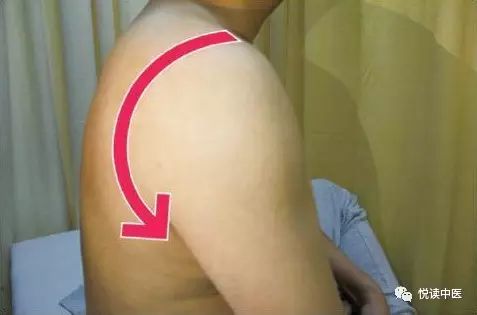
Figure 2 Curved Scraping Method
3. Reverse Scraping Method
This method involves scraping in the opposite direction of the conventional scraping direction, starting from the distal end towards the proximal end (see Figure 3). This method is suitable for patients with varicose veins in the lower limbs, lower limb edema, or areas where conventional scraping is ineffective.

Figure 3 Reverse Scraping Method
4. Rotational Method
This involves scraping in a rhythmic manner, either clockwise or counterclockwise (see Figure 4). This method is suitable for areas around the navel, around the breasts in women, and around the patella in the knee joints.
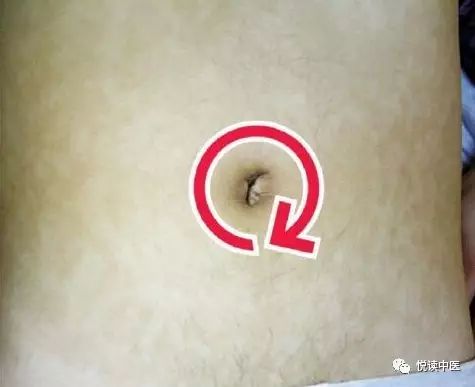
Figure 4 Rotational Method
5. Pushing Scraping Method
This method involves scraping in the opposite direction of the operator’s standing position. For example, if the operator is in front of the recipient’s right side, when scraping the left side of the neck and shoulder, this method should be used.
(4) Classification by Contact Area of the Scraping Board1. Friction Method
This involves placing the scraping board directly against the skin or using a cloth barrier to perform regular rotational or linear back-and-forth movements, generating heat in the skin (see Figure 5). This method is suitable for areas that feel numb, cold, or have dull pain, such as the inner shoulder, lower back, and abdomen; it can also be used before scraping to help the recipient relax.
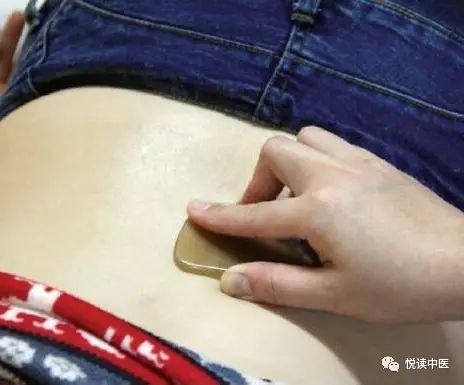
Figure 5 Friction Method
2. Combing Method
This involves using the scraping board or comb to scrape from the hairline at the forehead and both sides of the temples towards the back of the head at a 45° angle, with gentle and smooth movements, resembling combing hair, hence the name (see Figure 6). This method is suitable for headaches, dizziness, fatigue, insomnia, and mental tension.
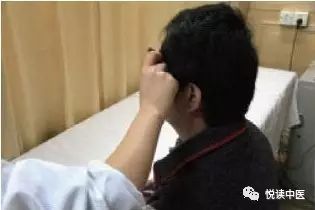
(1)
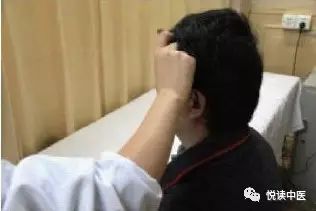
(2)
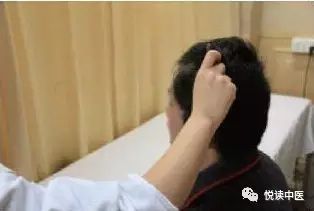
(3)
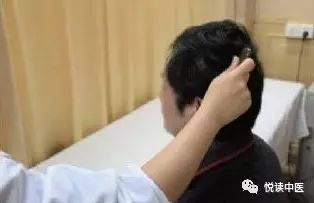
(4)
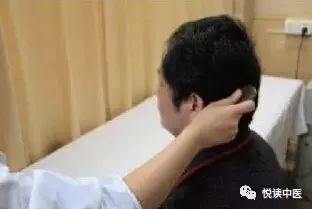
(5)
Figure 6 Combing Method
3. Point Pressure Method
This method, also known as the acupressure method, involves using the edge of the scraping board to directly press on acupoints, gradually increasing the pressure to the recipient’s tolerance, holding for several seconds before quickly lifting, and repeating 5 to 10 times (see Figure 7). This method is suitable for acupoints located in fleshy areas or for areas where scraping cannot reach deeply or is not suitable for direct scraping, such as Huan Tiao (环跳), Wei Zhong (委中), Du Bi (犊鼻), Shui Gou (水沟), and between the spinous processes of the back.
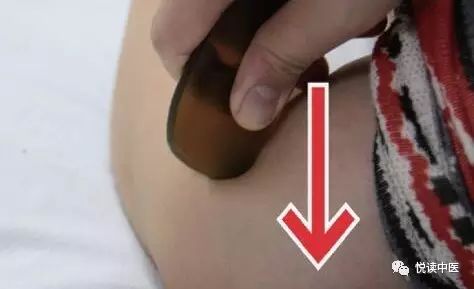
Figure 7 Point Pressure Method
4. Pressing and Rubbing Method
This involves applying point pressure and rubbing at acupoints along the meridians, pressing down and then moving back and forth or in a circular motion (see Figure 8). The scraping board should remain in contact with the skin without moving, performing 50 to 100 presses per minute. This method is suitable for acupoints such as Tai Yang (太阳), Qu Chi (曲池), Zu San Li (足三里), Nei Guan (内关), Tai Chong (太冲), Yong Quan (涌泉), and San Yin Jiao (三阴交).
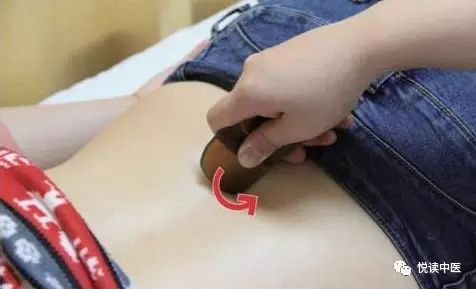
Figure 8 Pressing and Rubbing Method
5. Angle Scraping Method
This involves using an angled scraping board or the edges of the scraping board to contact the skin at a 45° angle, scraping from top to bottom or from inside out (see Figure 9). The technique should be flexible, avoiding excessive force that could damage the skin. This method is suitable for joints in the limbs, areas along the sides of the spine, bony protrusions, or acupoints in the shoulder area, such as Feng Chi (风池), Nei Guan (内关), He Gu (合谷), and Zhong Fu (中府).
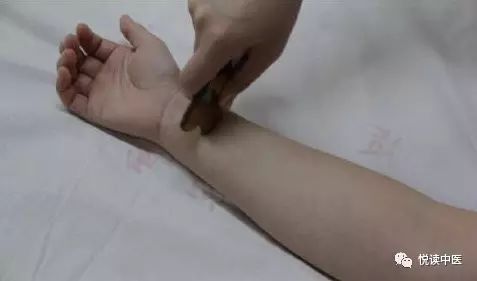
Figure 9 Angle Scraping Method
6. Edge Scraping Method
This involves using the long edge of the scraping board to contact the skin at a 45° angle (see Figure 10). This method is suitable for scraping large areas, such as the abdomen, back, and lower limbs.
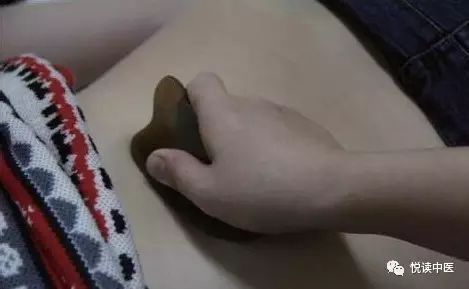
Figure 10 Edge Scraping Method
 2. Common Facial Techniques
2. Common Facial Techniques
1. Flat Rubbing Method
This involves the scraping board making flat contact with the skin, using wrist strength to perform single-direction scraping, or both hands can hold the board to scrape to the sides (see Figure 11). It is important to maintain a steady technique, even pressure, smooth movement, and a large contact area. This method is suitable for the forehead, cheekbones, and neck areas of the face.
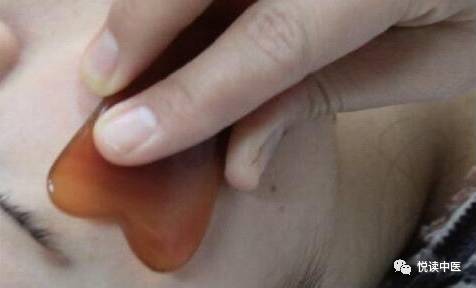
Figure 11 Flat Rubbing Method
2. Flat Pushing Method
This involves holding the scraping board at a 5° to 15° angle to the skin and pushing in a single direction (see Figure 12). One hand can hold the board while the other hand stabilizes the skin being pushed, or both hands can hold the board, with one pressing down to prevent pulling the skin. It is important to keep the technique gentle and the pressure consistent. This method is suitable for the forehead and neck areas of the face, such as pushing the tail of the fish lines.
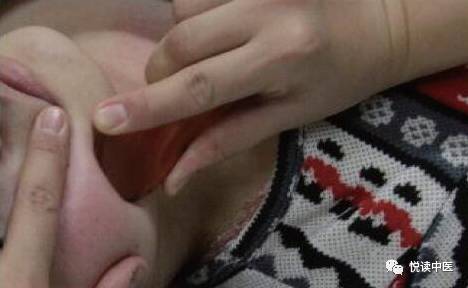
Figure 12 Flat Pushing Method
3. Flat Pressing Method
This involves using the edge or flat surface of the board to press on the skin, lifting and pressing repeatedly for 4 to 6 times (see Figure 13). This method is characterized by a quick press and release, applying pressure without excessive force, and stopping when the pressure is applied, which differs from the point pressure method. This method is suitable for smaller areas that are not suitable for scraping, such as around Ying Xiang (迎香) and Si Bai (四白) acupoints.
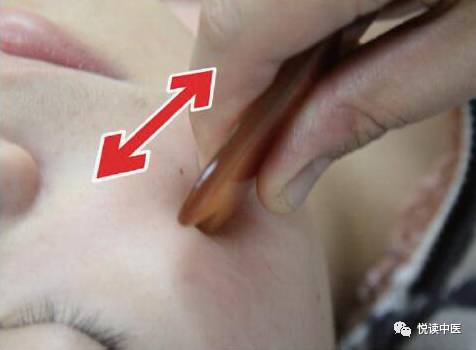
Figure 13 Flat Pressing Method
 3. Special Gua Sha Techniques
3. Special Gua Sha Techniques
1. Plucking Method
This involves using the edge of the scraping board on tendons, muscle attachments, or specific acupoints, applying rhythmic point pressure and rubbing, and then quickly flicking outward, resembling plucking a string, hence the name (see Figure 14). The technique should be gentle, with moderate pressure and a quick speed, performing 3 to 5 plucks on each area. This method is suitable for treating pain in bones, joints, and ligaments.
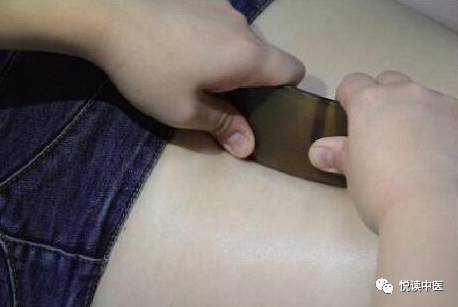
(1)
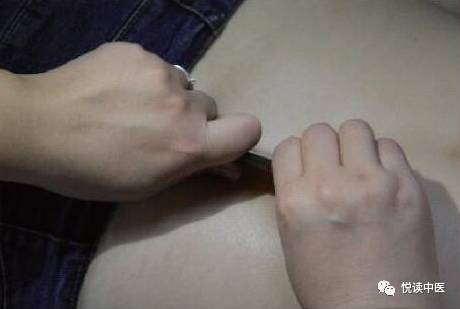
(2)
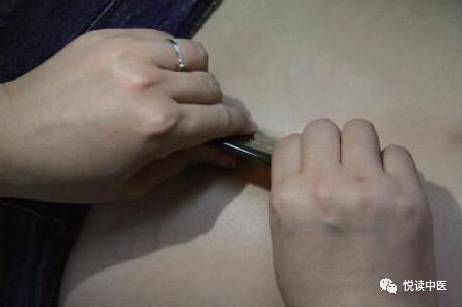
(3)
Figure 14 Plucking Method
2. Slapping Method
This method, also known as the striking method, involves holding one end of the scraping board and using wrist or elbow joint movements to rhythmically strike the surface of the body with the other end of the board, maintaining a consistent speed and gentle force (see Figure 15). This method is suitable for the lower back, forearms, popliteal fossa, and areas below.
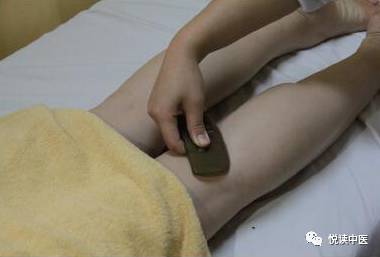
(1)
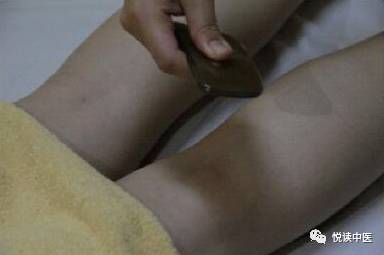
(2)
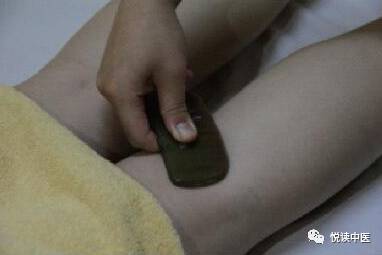
(3)
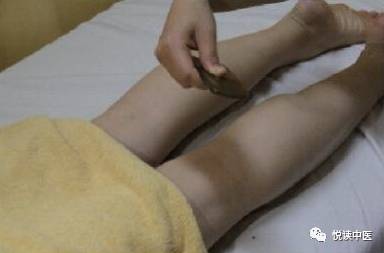
(4)
Figure 15 Slapping Method
3. Double Scraping Method
This method, also known as the double board scraping method, involves each hand holding a board and alternating or simultaneously scraping the same area (see Figure 16). Both hands should apply even force and operate steadily. This method is suitable for both sides of the spine and both lower limbs.
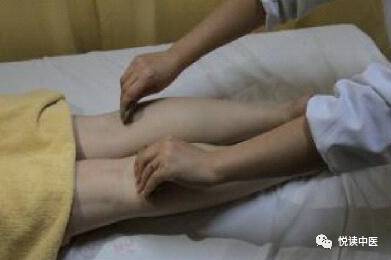
(1)
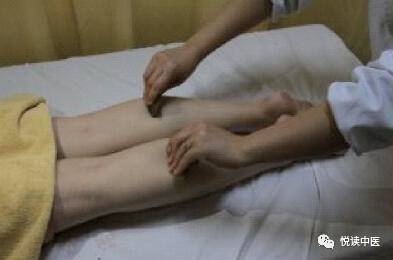
(2)
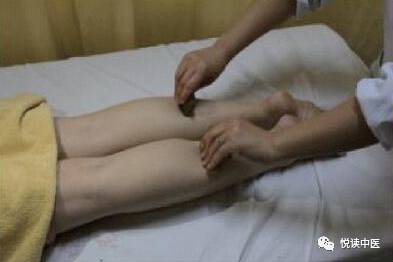
(3)
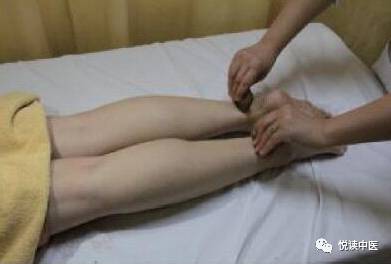
(4)
Figure 16 Double Scraping Method
4. Pinching Method
This method, also known as the pulling or squeezing method, involves bending the fingers to grasp the treatment area with the second joint of the index and middle fingers or pinching with the index and thumb, lifting the skin and muscle, or tearing specific areas, quickly sliding outward and releasing, until the skin shows purple-red or bruised spots (see Figure 17). This method is suitable for areas on the head and face, such as the Yintang (印堂), Tian Tu (天突), and along the spine.
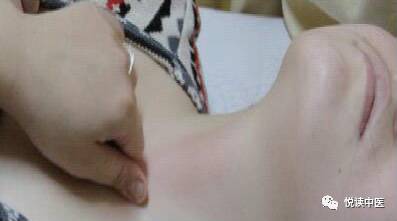
Figure 17 Pinching Method
5. Pricking Method
This method, also known as the releasing method, involves using a three-edged needle or disposable blood collection needle to prick the skin at the site of visible raised bruises, spots, or purple lumps after Gua Sha, releasing a small amount of blood to expel the stasis and pathogenic factors (see Figures 18-20). After the procedure, disinfect with iodine and apply pressure with tape or a band-aid. This method is suitable for superficial venous expansion bruises in areas such as the popliteal fossa and temples, and can also be used for heat stroke, acute lumbar sprains, and varicose veins in the lower limbs. The operation of the three-edged needle should comply with the requirements of GB/T21709.4.
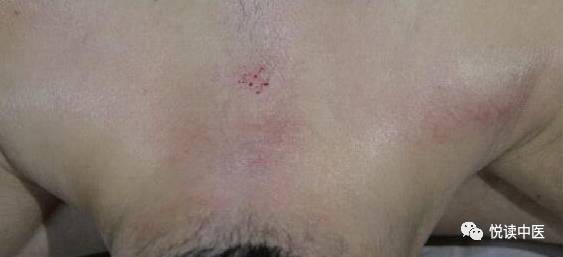
Figure 18 Back Pricking Method

Figure 19 After Pricking the Back

Figure 20 After Finger Pricking
 4. Gua Sha Techniques Classification
4. Gua Sha Techniques Classification
1. Gua Sha and Cupping Method
This method combines Gua Sha with cupping, first performing Gua Sha, then leaving a cup on the scraped area or moving the cup (see Figure 21). This method is suitable for conditions in the back and lower limbs, such as neck and shoulder pain, low back pain, insomnia, acne, and fatigue. The operation of cupping should comply with the requirements of GB/T21709.5.
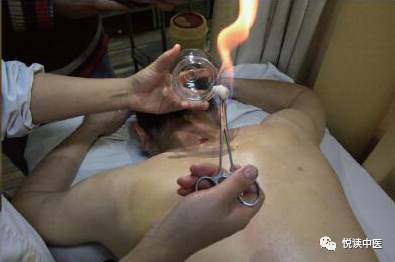
(1)
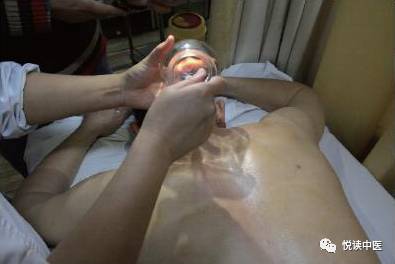
(2)
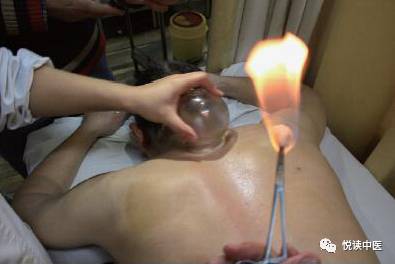
(3)
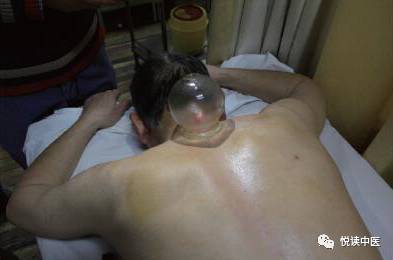
(4)
Figure 21 Gua Sha and Cupping Method
2. Gua Sha and Massage Method
This method combines Gua Sha with massage, which can be performed in either order. This method is suitable for the neck, lower back, and limbs. Performing massage before Gua Sha can enhance the effects of massage; performing Gua Sha before massage can promote blood circulation and the absorption of bruises, improving the effectiveness of Gua Sha.
Copyright Notice
This article is excerpted from Gua Sha Therapy Along the Meridians (published by China Traditional Chinese Medicine Press, edited by Xu Mingzhu et al.), and the final interpretation rights belong to the original author. Published by Yue Du Zhong Yi (WeChat ID: ydzhongyi). Cover image sourced from the internet. Unauthorized reproduction is prohibited!
